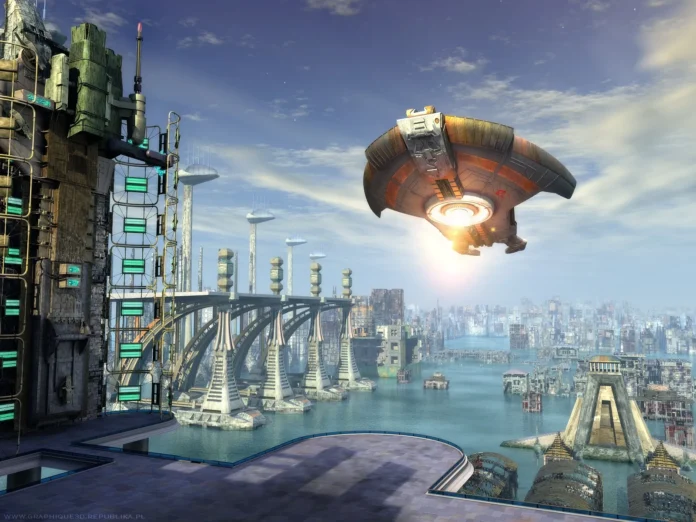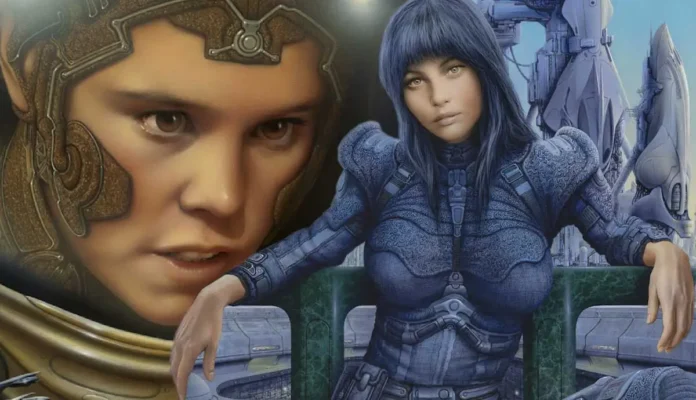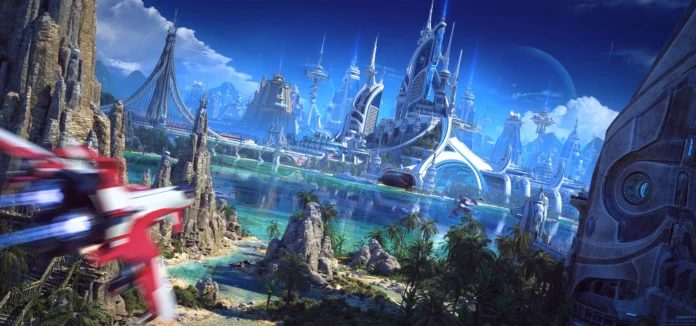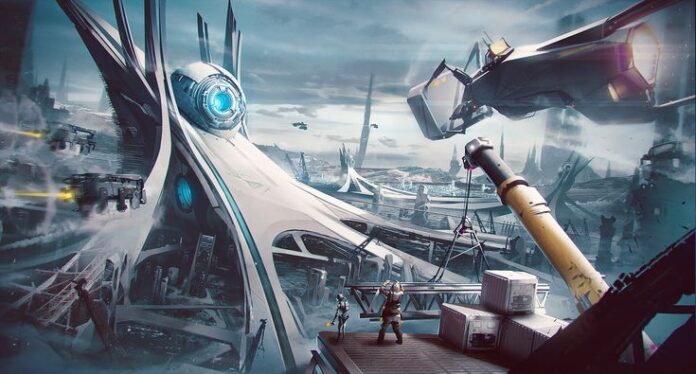In the expansive universe of science fiction literature, the possibilities are limitless. Authors spin complex narratives of far-off galaxies, advanced technologies, and alternate realities, taking readers on a journey through time and space. However, the words on the page are only one part of the story’s allure.
The other key component that often magnifies these tales’ influence is the creative work of science fiction illustrators. These skilled artists breathe life into the text with their vibrant illustrations, captivating readers and enriching the overall reading experience. This article provides an in-depth exploration into the intriguing domain of these illustrators, assessing their role, their craft’s evolution, and their significant impact on the genre.
The Role of Science Fiction Book Illustrators

Science fiction book illustrators play a pivotal role in the world of literature. Their task is to visually interpret the author’s words, creating a symbiotic relationship between text and image that elevates the storytelling experience. Here’s a closer look at their multifaceted role:
1. Visual Storytellers
At the heart of their role, illustrators are visual storytellers. They must decipher the author’s descriptions and translate them into captivating images. This skill is particularly crucial in the sci-fi genre, where authors often introduce readers to unfamiliar worlds and technologies.
2. Creating Atmosphere
Illustrators set the tone and atmosphere of a sci-fi novel. Whether it’s a dystopian landscape, a futuristic cityscape, or an alien planet, their visuals immerse readers in the world the author has crafted.
3. Character Portrayal
Just as authors craft their characters with intricate personalities and backstories, illustrators breathe life into them. They capture the essence of each character, allowing readers to form a deeper connection with the protagonists and antagonists.
4. Visualizing Technology
One of the hallmarks of science fiction is its imaginative technology. Illustrators are tasked with bringing futuristic gadgets, spacecraft, and otherworldly machinery to life. Their creativity in this area can define the entire look of a story.
5. Cover Art
The cover of a book is often the first thing a reader sees. Science fiction book illustrators are responsible for creating eye-catching, thought-provoking cover art that entices potential readers and conveys the essence of the story within.
Evolution of Science Fiction Illustration

The art of science fiction illustration has undergone a remarkable evolution since its inception. While it has always been driven by creativity, advances in technology and shifts in artistic trends have shaped its trajectory. Let’s explore the key milestones in the evolution of science fiction illustration:
1. Pulp Magazines and Early Illustrations
In the early 20th century, pulp magazines like “Amazing Stories” and “Astounding Science Fiction” relied heavily on illustrations to attract readers. These illustrations often featured bold, dynamic scenes that captured the excitement and wonder of the genre.
2. Golden Age of Illustration
The mid-20th century is often referred to as the “Golden Age” of science fiction illustration. Artists like Frank R. Paul and Chesley Bonestell gained prominence during this era, creating iconic images of futuristic cities, space travel, and alien landscapes. Their work not only influenced the visual style of the genre but also inspired countless future illustrators.
3. Transition to Digital Art
With the advent of digital technology, science fiction illustration underwent a significant transformation. Artists began to explore the possibilities offered by digital tools, enabling them to create more detailed and complex imagery. This transition expanded the creative horizons of illustrators, allowing them to push the boundaries of imagination.
4. Diversity and Inclusivity
As the world became more aware of the importance of diversity and representation in art and literature, science fiction illustration followed suit. Illustrators started to depict a wider range of characters from various backgrounds, genders, and cultures, making the genre more inclusive and reflective of the real world.
The Impact of Science Fiction Illustration

The impact of science fiction illustration extends far beyond the covers of books. It has the power to shape culture, inspire scientific advancements, and fuel the imaginations of generations. Here are some of the profound ways in which sci-fi illustration has left its mark:
1. Inspiration for Science
The imaginative technologies and concepts depicted in science fiction art have often served as inspiration for real-world scientists and engineers. From the communicators in “Star Trek” inspiring the creation of modern cell phones to the futuristic spacecraft influencing spacecraft design, the line between fiction and reality often blurs.
2. Cultural Iconography
Iconic images from science fiction, such as H.G. Wells’ Martians or H.R. Giger’s xenomorph from “Alien,” have become cultural touchstones. These images are instantly recognizable and have had a lasting impact on popular culture.
3. Fostering Imagination
Science fiction illustration encourages readers to exercise their imagination. When readers encounter vivid visuals that go beyond the written word, it prompts them to envision and explore the world of the story in greater depth, fostering a sense of wonder and creativity.
4. Artistic Innovation
Many artists working in science fiction have pushed the boundaries of their craft, experimenting with new techniques and styles. This artistic innovation has not only influenced the genre itself but has also had a ripple effect on other forms of visual storytelling.
Notable Science Fiction Illustrators

To truly appreciate the art of science fiction illustration, it’s essential to recognize some of the luminaries who have left an indelible mark on the genre:
1. Frank R. Paul:
Often regarded as the father of science fiction illustration, Frank R. Paul’s work graced the covers of many early science fiction magazines. His imaginative depictions of space travel and futuristic technology set the visual tone for the genre.
2. H.R. Giger:
H.R. Giger’s biomechanical and surreal illustrations, particularly his work on the “Alien” franchise, brought a hauntingly unique aesthetic to science fiction. His designs for the xenomorph have become iconic.
3. Chris Foss:
Chris Foss is celebrated for his spaceship designs, which are known for their intricate and industrial look. His illustrations have graced the covers of numerous sci-fi novels, including works by Isaac Asimov and Arthur C. Clarke.
4. Syd Mead:
Syd Mead’s futuristic cityscapes and vehicle designs are synonymous with the sci-fi genre. His work on films like “Blade Runner” and “Tron” helped shape the visual identity of those iconic movies.
The Digital Age of Science Fiction Illustration

In recent years, the digital age has brought about a revolution in science fiction illustration. The accessibility of digital tools has allowed a new generation of artists to explore the genre in innovative ways. Here are some key aspects of the digital age of sci-fi illustration:
1. Digital Painting:
Digital painting software has enabled artists to create stunning, highly detailed illustrations with precision and ease. This has led to a resurgence of traditional painting techniques adapted for the digital medium.
2. Concept Art:
The world of film and video games has increasingly turned to concept artists to visualize the settings, characters, and technology in their projects. These concept artists often draw inspiration from science fiction literature, bringing the genre to a wider audience.
3. Online Communities:
The internet has provided a platform for sci-fi illustrators to share their work with a global audience. Online communities, social media, and crowdfunding platforms have empowered artists to connect directly with fans and patrons.
4. Cross-Media Collaboration:
Science fiction illustration has extended beyond books to encompass other media. Illustrators now collaborate with filmmakers, game developers, and authors to create cohesive and immersive worlds that span multiple forms of entertainment.
Conclusion: The Endless Frontier of Science Fiction Illustration

In the ever-expanding universe of science fiction literature, illustrators serve as cosmic cartographers, charting unexplored realms with their brushstrokes and digital canvases. They transport readers to distant planets, introduce them to otherworldly beings, and inspire them to dream of futures yet to come. The art of science fiction illustration, with its rich history and limitless possibilities, continues to shape the genre and ignite the imaginations of generations to come. So, as you dive into your next sci-fi adventure, take a moment to appreciate the interstellar imagery that enhances the narrative and elevates the reading experience to new heights. After all, in the realm of science fiction, the words may guide the journey, but the illustrations are the guiding stars.








